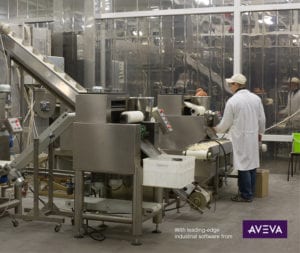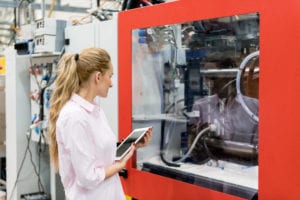In today’s mining world there are many trends shaping the future of mining. Some trends challenge the economic, social and environmental aspects of the industry. Others provide opportunities for mining companies to improve their business – even in the current economic climate. One such trend is a combination of these two trends – the convergence of Information Technologies (IT) and Operational Technologies (OT). And it’s helping mining companies become more profitable and sustainable.
Before we discuss this IT/OT convergence and how it is benefiting mining companies it is important to understand what these terms mean. In a mining operation there have always been different ways to view technology – either “top down” or and “bottom up”.
From the top down, we view the world from the Information Technology perspective. This perspective focuses on the business, operations and enterprise information systems required to operate and support a mining business. Such systems are based on well published IT standards for the integration of large volumes of information across different applications within a time frame of hours, days, weeks and months.
From the bottom up, we view the world from the Operations Technology perspective. The OT perspective concentrates on the plant, processes and equipment required to perform the actual mining and processing operations. These OT systems are often based on vendor-specific, proprietary technologies operating in a real-time, or near real-time, environment.
Clearly these two different worlds have evolved for different purposes. They have been focused on different parts of the enterprise and have followed different technologies in order to achieve their own desired outcomes. These differences have led to the development of different departments within a mining business, each with their own culture and siloed view of the world. Clear borders of responsibilities were established between the two departments, however, conflict and differences of opinion occurred when they occupied the same room. A situation, which, more often than not, led to less than desirable outcomes for mining companies.
Change is afoot
The good news is that this situation is changing quite rapidly, and for a number of reasons. Firstly, mining companies are recognizing the massive potential in the untapped information which exists across their operations. This information can have a significant impact on improving safety, sustainability and productivity. And it lies within the equipment, processes, people and systems that already exist within their business. What’s needed is a way to make sure this information is not only trusted and validated, but easily accessible from the right place at the right time and in the right format.
This leads to the second reason for change. For the last decade there has been a rapid take up of information technologies by the operational world. For example, the rise of communication technologies such as Ethernet, TCPIP, Web, etc. once the domain of the IT world, has displaced many of the operational systems’ proprietary networks and architectures of the past. This has led to a common language that can be used between the IT and OT worlds and the start of the fusing or converging of these two cultures. Mining companies that have seen the benefits of this convergence are striving to ensure that it continues, however, there is still a long way to go.
Smoothing the road ahead
Some of the challenges that still prevent IT/OT convergence from realizing its full potential include issues such as ownership of the technologies. Although we now have common communication technologies from the top floor (enterprise) down to the shop floor (plant), the architectures, maintenance requirements, environmental demands and criticality of the technologies differ somewhat from the IT and OT worlds.
These differences still result in zones of ownership forming between IT and OT, however, this is more often than not a result of mutual understanding and agreement on what role each group plays in realizing the massive potential that tapping into the wealth of information which exists across their operations can have on improving safety, sustainability and productivity.
Coming soon: In the second part of this blog I’ll talk about realizing the benefits of a connected enterprise.



Conversation
Interesting – look forward to part 2!
Michael
I couldn’t agree more on the convergence of IT/OT. Intelligent Business Operations is about connecting smart devices to business systems that monitor and detect exceptions. The real value comes then you add the skills, knowledge and experience of operations and engineering personnel by not only giving them digital access to these devices, but to also give them the decision support in the form of BI and analytics to help them make the best decision fast and safely.
Great article and looking forward to part 2